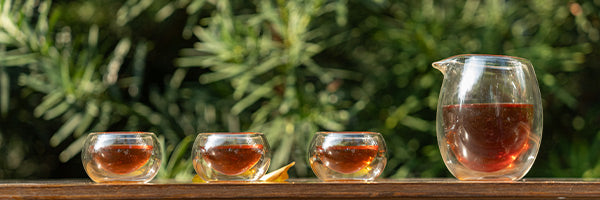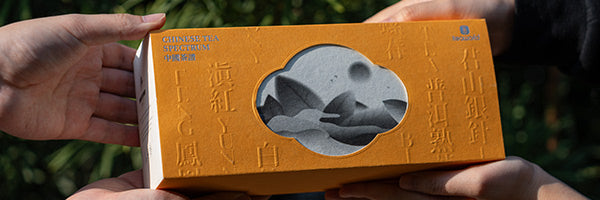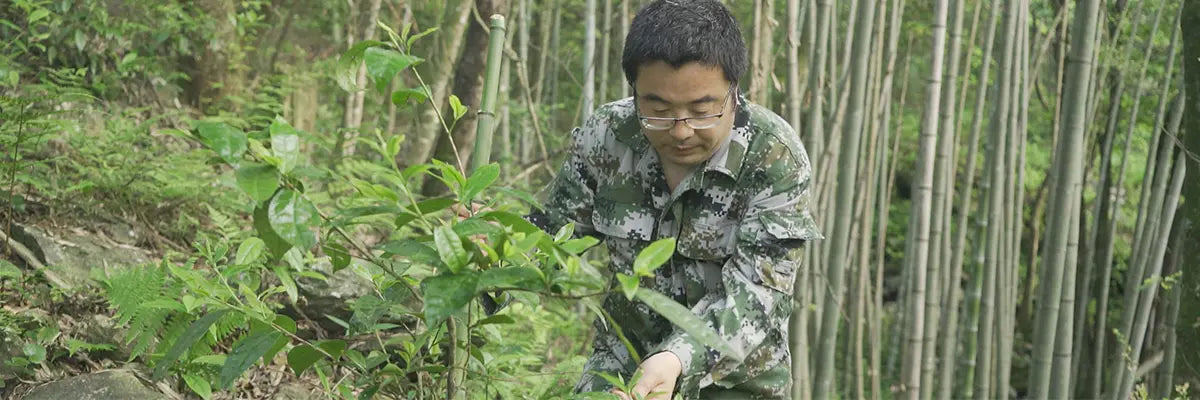Китайский листовой чай имеет богатую и древнюю историю, будучи одним из самых ранних видов чая, выращиваемых и потребляемых в мире. Известный своим уникальным вкусом и богатым культурным значением, китайский листовой чай заслужил почетное место в мировом чайном ландшафте. Когда вы стремитесь исследовать высококачественные чаи и ищете наилучший вкус и аромат, вы можете обнаружить, что китайский листовой чай — это ответ, который вы искали.
Однако многие люди колеблются на пороге китайского листового чая из-за многочисленных разновидностей и обширных знаний, связанных с ним. С множеством вариантов и обилием информации, связанной с чаем, может быть сложно понять, с чего начать. Здесь мы представляем простой метод, чтобы начать свое путешествие в мир китайского листового чая.
О китайском листовом чае
Китай является родиной чая, и согласно историческим записям, происхождение китайского чая можно проследить до 2737 г. до н. э. Легенда гласит, что во времена правления древнего китайского императора чай был впервые обнаружен и использовался для потребления. С тех пор выращивание и мастерство китайского чая постепенно развивались, став неотъемлемой частью жизни китайцев.
Китайский чай бывает разных видов, и на основе различных методов производства и обработки его можно разделить на шесть основных классов: листовой зеленый чай, листовой черный чай, листовой желтый чай, листовой белый чай, листовой улун и листовой темный чай. Каждый класс чая имеет свои уникальные характеристики и вкусы.
Для новичков некоторые типы из шести могут не подойти для пробы с самого начала. Например, листовой белый чай и листовой темный чай требуют некоторого опыта чаепития, чтобы оценить их красоту. Листовой желтый чай относительно нишевый и не рекомендуется для первых попыток.

Идеальным выбором для новичков является китайский листовой черный чай и китайский листовой улун. Китайский листовой черный чай предлагает широкий выбор вариантов, независимо от того, предпочитаете ли вы крепкий вкус или дымный аромат, вы можете найти хорошо сделанные сорта. Китайский листовой улун, известный своим насыщенным ароматом, находится между вкусами листового черного чая и листового зеленого чая, что делает его очень дружелюбным для новичков. Конечно, если вы предпочитаете свежий вкус, китайский листовой зеленый чай также является хорошим выбором.
Найдите больше листового зеленого чая в нашем Green Tea Sampler.>>>
Китайский листовой черный чай
Китайский листовой черный чай появился в середине династии Мин (около 16 века) в регионе Таньян горы Уи провинции Фуцзянь. Самый ранний сорт был известен как «Лапсанг сушонг». На основе различных методов производства черный чай можно далее разделить на мелколистовой черный чай, черный чай Гунфу и ломаный черный чай. Названный так из-за своих красноватых сухих листьев и преимущественно красного цвета заваренного чая, он по праву называется черным чаем.
Среди различных видов китайского листового черного чая наиболее представительными и широко ценимыми являются Лапсанг Сушонг, Черный чай Индэ и Цзинь Цзюнь Мэй.
1. Черный чай Сушонг

Черный чай Сушонг — это особый сорт Фуцзянь, известный как предок всех черных чаев мира. В зависимости от процесса производства черный чай Сушонг можно разделить на копченые и некопченые версии.
Копченая версия черного чая Сушонг использует зрелое сырье с пухлыми и хорошо сформированными листьями, имеющими глянцевый темный цвет. Заваренный чай имеет насыщенный и яркий красный оттенок, источая аромат соснового дыма. Его вкус мягкий и густой, напоминающий суп из лонгана с нотками сладких фиников.
С другой стороны, некопченая версия черного чая Сушонг имеет вкус, напоминающий медовую воду, с гладкой и бархатистой текстурой. В нем нет ноток карамели или супа из батата, он предлагает аромат, похожий на мед, и тонкий цветочный оттенок.
2.Черный чай Yingde

Город Индэ, расположенный в провинции Гуандун, Китай, является родиной черного чая в регионе и славится производством уникального сорта, известного как черный чай Индэ, который является одним из пяти основных видов черного чая в Китае.
Yingde Black Tea имеет свободные, несколько разбросанные полоски, напоминающие вид отдельных листьев из рассыпного чая улун. Чайные листья имеют темный, блестящий цвет. При заваривании и употреблении Yingde Black Tea может похвастаться ярким и ярким красным настоем с насыщенным чайным ароматом и резким, возвышенным ароматом.
3.Юньнаньский черный чай

Yunnan Black Tea , также известный как Dian Hong, относится к категории крупнолистового чая Gongfu и в основном производится в таких регионах, как Линьцан и Баошань в Юньнани. Это восходящая звезда среди китайских черных чаев Gongfu.
Внешний вид черного чая Юньнань отличается плотно завязанными, крепкими и пухлыми чайными листьями с глянцевым темным цветом, подчеркнутым золотистыми кончиками. Заваренный чай демонстрирует яркий и красочный настой, характеризующийся свежим, крепким и длительным ароматом. Вкус густой, насыщенный и освежающий с выраженным стимулирующим качеством. Ровная, нежная и блестящая красная нижняя часть листа выделяет черный чай Юньнань как отличительный черный чай Гунфу из Китая.
Китайский листовой чай улун
Китайский листовой улун был создан во времена династий Мин и Цин. Как полуферментированный чай, листовой улун выделяется как отличительная категория среди шести основных видов чая Китая. Этот чай в основном производится в провинциях северной и южной Фуцзянь, а также в Гуандуне и на Тайване.
Благодаря уникальному процессу производства, китайский листовой улун сочетает в себе насыщенный и крепкий вкус листового черного чая со свежими и ароматными качествами листового зеленого чая. После дегустации он оставляет стойкий аромат на нёбе, предлагая сладкое и освежающее послевкусие. Самая выдающаяся особенность чая улун — его насыщенный аромат. Ароматы чая улун можно разделить на несколько основных типов, включая цветочные, фруктовые, медовые, свежие и ароматы древесного угля, с многочисленными подкатегориями, которые стоит изучить.
1. Да Хун Пао

Da Hong Pao , произрастающий на горе Уи в провинции Фуцзянь, является особенным и знаменитым китайским чаем. Его плотно скрученный вид имеет свежий зеленовато-коричневый цвет, а при заваривании чай дает яркий оранжево-желтый настой. Листья демонстрируют сочетание красного и зеленого с отчетливым «рок-рифмом».
2.Ти Гуаньинь

Tie Guanyin был создан местными фермерами чая в Аньси, провинция Фуцзянь, между 1725 и 1735 годами и входит в десятку лучших известных чаев Китая. Tie Guanyin имеет уникальный аромат с нотками «аромата орхидеи» и «аромата османтуса». Заваренный чай имеет яркий золотисто-желтый цвет и насыщенный, мягкий и сладкий вкус. Tie Guanyin делится на три типа: Qing Xiang (легкий аромат), Nong Xiang (тяжелый аромат) и Chen Xiang (выдержанный аромат).
3.Миннан Шуйсянь

Чай Minnan Shuixian характеризуется плотно скрученными и крепкими чайными листьями, имеющими песчано-зеленый цвет с блестящим оттенком медово-желтого. Он источает чистый и возвышенный аромат, напоминающий орхидею, в то время как заваренный чай демонстрирует прозрачный оранжево-желтый настой. Вкус сладкий, мягкий и освежающий, с ярко-желтым и равномерно толстым дном листа. Даже после нескольких завариваний аромат продолжает выливаться из чашки, оставляя длительную сладость.
4. Фэнхуан Даньцун

Чай Фэнхуан Даньцун производится в городе Фэнхуан, городе Чаочжоу, провинции Гуандун, и славится горой Фэнхуан. Во времена правления Тунчжи и Гуансюй фермеры чая стремились улучшить качество чайных листьев. Они внедрили метод, включающий сбор отдельных растений, обжарку отдельных растений и индивидуальный маркетинг растений. Выдающиеся отдельные растения отделялись и выращивались как отдельные деревья, заслужив название чай Фэнхуан Даньцун. В то время более десяти тысяч превосходных древних чайных деревьев были обработаны с использованием метода сбора отдельных растений, отсюда и название чая Фэнхуан Даньцун.
Найдите больше китайского листового чая в нашем классическом чайном сэмплере.>>>
Заваривание китайского листового чая
Для заваривания китайского листового чая рекомендуется использовать гайвань (чашу с крышкой), поскольку этот способ заваривания позволяет раскрыть весь потенциал листового чая и ощутить вкус лучшего листового чая .
- Разогрейте посуду для заваривания чая: перед завариванием в гайвани ополосните посуду кипятком, чтобы нагреть ее.
- Добавьте чайные листья: Исходя из емкости гайвани, добавьте соответствующее количество чайных листьев. Например, стандартная гайвань емкостью 110 миллилитров вмещает 5 граммов чайных листьев. Правильная пропорция имеет решающее значение для раскрытия наилучшего вкуса чая.
- Заваривание: Круговыми движениями налейте кипяток в гайвань, позволяя воде взаимодействовать с чайными листьями. Используйте крышку, чтобы аккуратно перемешать листья, убедившись, что они полностью разбухли. Накройте гайвань и подождите 10-15 секунд, чтобы заварился.
- Наливание: Перелейте чайный напиток из гайвани в кувшин, затем равномерно распределите чай из кувшина по небольшим чашкам, следя за тем, чтобы каждая чашка была заполнена примерно на семьдесят процентов.
Высококачественный листовой черный чай и листовой улун можно заваривать до 7 раз и более. При последующих завариваниях можно немного увеличить время настаивания.
Китайский чай славится во всем мире своим богатым разнообразием, сложным мастерством и уникальным культурным значением. Будь то зеленый чай, черный чай, желтый чай, белый чай, улун или темный чай, каждый вид чая имеет свой уникальный вкус и ощущение во рту.
Имея долгую и богатую историю, китайский чай, чайные церемонии и культура чая являются сокровищами китайского народа. Независимо от того, пьется ли он дома, в деловой обстановке или во время встреч, китайский чай является любимым напитком. Смакуя китайский чай, мы не только ощущаем аромат и вкус чайных листьев, но и получаем представление о древних культурных традициях и мудрости Китая.











































































